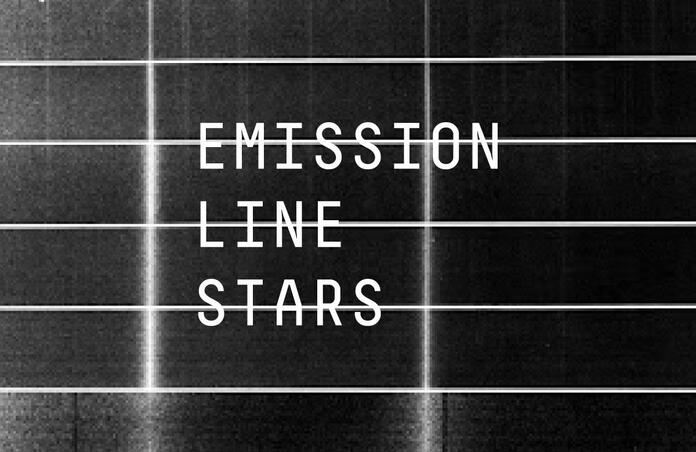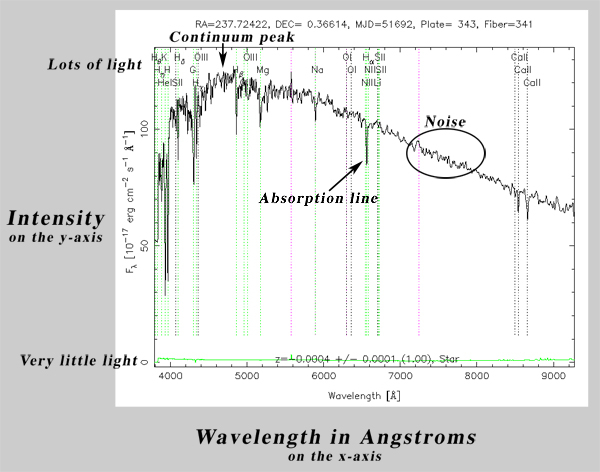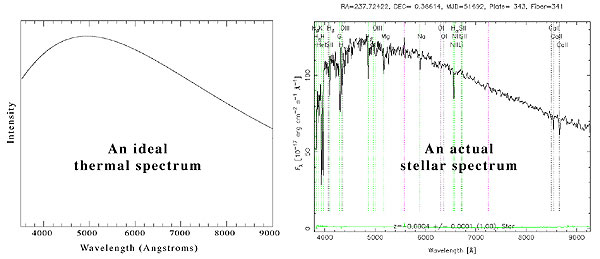What is an emission-line star?

Although all stars are giant gas balls conducting nuclear fusion in their core, there are different types of them, for which we observe a “signature” spectrum.
To study spectra, it is useful to keep the three Kirchhoff laws in mind:
1. A hot gas at high pressure has a continuous spectrum
2. A gas at low pressure and high temperature will produce emission lines
3. A gas at low pressure in front of a hot continuum causes absorption lines.
A star emits light in wavelengths over all of the electromagnetic spectrum. More precisely, the thermal radiation produces a continuous spectrum, as expected from the first Kirchhoff law, although different amounts of energy can be emitted at different wavelengths. In an ideal thermal spectrum, there is a continuum peak, determined by the surface temperature of the star.

In reality, there are also other features on a star’s spectrum: absorption lines and random noise. Absorption lines are due to the star’s atmosphere, which contains atoms that get ionized by the radiation – this corresponds to the third Kirchhoff law. At the atomic scale, what happens is that a photon with a specific energy gets absorbed by the atom’s electron; since energy is directly related to wavelength, on the spectrum there is a dip in intensity at the corresponding wavelength. Analysing these absorption lines gives astronomers information about the temperature of the star, but also its density and the chemistry.
At the same time, some stars’ spectra also show emission lines. We’ve discussed the process of emission in the context of HII regions, for emission-line stars it is often a circumstellar disk where the emissions occur. The disk is formed of material previously ejected from the star, in the case of the two types “Be stars” and “Shell stars” this is due to their rapid rotations. The material aggregates into an equatorial disk because of that same rotation. Then, the radiation from the star heats this gaseous disk, leading to the effect described by the second Kirchhoff law: emission lines. xztgyb

The first recognized Be star was Gamma Cassiopeiae, the “middle star” in the famous W-shaped Cassiopeia constellation. The brightest one is Achernar, which in fact is the ninth brightest star in the whole sky! Another interesting fact about this star is that it has such a high rotation speed that it looks like it was “flattened”. One more example: the Pleione star, actually a binary star system where the brightest of the two is a Be type star, is located in a popular target for astrophotography - the Pleiades. This star is even more fascinating because it is variable, its disk can “disappear” by having its material attracted back into the star (becoming a normal star) and later being reemitted again to form the disk of an emission-line star. It is possible for Be stars to form multiple rings of successive rings, creating an even more complex environment.
Stars before the main sequence or evolved star may also display emission lines in their spectra, notably Wolf-Rayet stars, which make great targets for astrophotography.
Are you ready for some emission-line star-gazing? Submit your observation request on the webapp!
Cover Image: Spectra, modified from M. Richmond
Image credits:
1- Thermal Spectrum, Sloan Digital Sky Survey "Spectra of Stars"
2- Artist's impression of Pleione for NASA/ESA
